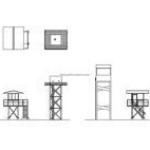Dream House Floor Plan Design Tool: Architecting Your Ideal Living Space
Designing a dream house involves meticulous planning and consideration of various factors, including space utilization, functionality, and aesthetics. A crucial aspect of this process is creating a detailed floor plan that accurately represents the intended layout and dimensions of the house. Fortunately, technological advancements have provided accessible and user-friendly dream house floor plan design tools that empower individuals to visualize their architectural aspirations and translate them into tangible plans.
These tools, available in various formats ranging from web-based applications to downloadable software, offer a plethora of features that simplify and streamline the design process. They cater to diverse skill levels, from novice homeowners embarking on their first renovation project to experienced architects seeking efficient design solutions. The capabilities encompass everything from drawing walls and placing furniture to generating 3D visualizations and calculating material costs. The accessibility and versatility of these tools have revolutionized the way people approach house design, enabling greater control and personalization.
Key Benefits of Using a Dream House Floor Plan Design Tool
Employing a dream house floor plan design tool offers significant advantages throughout the design and construction journey. These benefits not only streamline the process but also contribute to a more effective and satisfying outcome. They enhance communication, minimize errors, and ultimately help realize the envisioned dream home.
Enhanced Visualization and Conceptualization: A primary advantage of using a floor plan design tool is its ability to create visual representations of the intended living space. These tools allow users to draw walls, add windows and doors, and arrange furniture virtually, providing a clear picture of how the completed house will look and feel. The visual aspect facilitates a better understanding of spatial relationships, traffic flow, and overall aesthetics. Many tools also offer 3D rendering capabilities, transforming the 2D floor plan into a realistic 3D model that can be viewed from different angles. This immersive experience allows for a more comprehensive assessment of the design and helps identify potential issues or areas for improvement early on.
Furthermore, these tools enable experimentation with different design styles, color schemes, and material choices, allowing homeowners to explore various possibilities before committing to a specific design. The ability to visualize different options in a realistic setting empowers informed decision-making and ensures that the final design aligns with the homeowner's preferences and lifestyle. This visual clarity significantly reduces the risk of costly changes or regrets during the construction phase.
Improved Communication and Collaboration: Floor plan design tools significantly enhance communication between homeowners, architects, contractors, and other stakeholders involved in the project. A well-defined floor plan serves as a common language and a visual reference point for everyone involved. By sharing the digital floor plan, homeowners can effectively communicate their vision to the design team and ensure that their needs and desires are accurately understood.
Architects and contractors can use the floor plan as a blueprint for their work, minimizing the risk of misinterpretations and errors. The digital format allows for easy sharing, annotation, and modification of the plan, facilitating seamless collaboration and feedback. This streamlined communication process reduces misunderstandings, clarifies expectations, and contributes to a smoother and more efficient construction timeline. Real-time collaboration features found in some tools allow multiple users to work on the same plan simultaneously, making it easier for geographically dispersed teams to work together effectively.
Cost Estimation and Budgeting: Many dream house floor plan design tools include features that assist with cost estimation and budgeting. These tools can calculate the area of different rooms, the amount of materials needed, and the estimated cost of construction based on user-defined parameters. This information empowers homeowners to make informed decisions about material selections, design modifications, and overall budget allocation.
By providing a realistic estimate of the total project cost, these tools help prevent unexpected expenses and cost overruns. Homeowners can use the cost estimation features to compare different design options and identify cost-effective solutions that meet their budget constraints. Accurate cost estimation is crucial for securing financing, obtaining permits, and managing the overall project budget effectively. Some tools even integrate with material databases and supplier pricing, providing even more accurate and up-to-date cost estimates.
Essential Features of a Dream House Floor Plan Design Tool
A robust dream house floor plan design tool encompasses a range of features designed to facilitate the creation of accurate, detailed, and visually appealing floor plans. These features should cater to various design needs, from basic layout creation to advanced 3D modeling and cost estimation.
Intuitive Drawing and Editing Tools: The core functionality of any floor plan design tool lies in its drawing and editing capabilities. The tool should offer a user-friendly interface with intuitive tools for drawing walls, adding doors and windows, and defining room shapes. The drawing tools should be precise and allow for accurate measurements, ensuring that the floor plan reflects the intended dimensions of the house. Snapping tools and grid systems can further enhance precision and efficiency.
The editing tools should allow for easy modification of the floor plan, such as moving walls, resizing rooms, and adjusting door and window placements. The ability to undo and redo actions is essential for experimenting with different design options without fear of making irreversible changes. A good floor plan design tool should also offer features like mirroring, rotating, and aligning objects to streamline the editing process. Advanced tools might include features for creating curved walls, complex roof designs, and custom architectural elements.
Extensive Object Library: A comprehensive object library is crucial for furnishing and decorating the virtual house. The library should include a wide range of furniture, appliances, fixtures, and other objects that can be easily dragged and dropped into the floor plan. The ability to customize the size, color, and style of these objects is essential for creating a realistic representation of the intended interior design.
The object library should be organized into categories for easy navigation and should include search functionality for quickly finding specific items. Some tools allow users to import their own custom objects, expanding the possibilities for personalization and design flexibility. The object library should also include annotations and symbols for adding notes, dimensions, and other important information to the floor plan.
3D Visualization and Rendering: 3D visualization is a powerful feature that allows users to experience the floor plan in a realistic and immersive environment. The tool should offer the ability to generate 3D models from the 2D floor plan, allowing users to view the house from different angles and perspectives. The 3D model should accurately represent the materials, colors, and textures of the walls, floors, and furniture, providing a realistic visual representation of the completed house.
Rendering features can further enhance the realism of the 3D model by adding lighting effects, shadows, and reflections. The ability to walk through the virtual house in a 3D environment allows homeowners to experience the spatial relationships and traffic flow, identifying potential issues or areas for improvement. High-quality 3D renderings can also be used for marketing and presentation purposes, showcasing the design to potential buyers or investors.
Choosing the Right Dream House Floor Plan Design Tool
Selecting the appropriate dream house floor plan design tool requires careful consideration of various factors, including the user's skill level, design requirements, budget, and desired features. A tool that is too complex may be overwhelming for a novice user, while a tool that lacks essential features may be insufficient for a professional architect.
Assess Your Needs and Skill Level: Before choosing a floor plan design tool, it is important to assess your design needs and skill level. Consider the complexity of the project, the level of detail required, and your familiarity with design software. If you are a beginner with limited experience, a user-friendly tool with a simple interface and basic features may be the best option. If you are an experienced designer or architect, a more advanced tool with a wider range of features and customization options may be necessary.
Consider the specific design requirements of the project. For example, if you need to create complex roof designs or custom architectural elements, you will need a tool that offers advanced modeling capabilities. If you need to generate detailed cost estimates, you will need a tool that includes cost estimation features and integrates with material databases. By carefully assessing your needs and skill level, you can narrow down the options and choose a tool that is well-suited to your project.
Consider Cost and Compatibility: Floor plan design tools are available in various price ranges, from free online tools to expensive professional software. Consider your budget and choose a tool that offers the features you need at a price you can afford. Keep in mind that free tools may have limitations in terms of features or functionality, while paid tools may offer more advanced capabilities and better support.
Also, consider the compatibility of the tool with your operating system and hardware. Some tools are only compatible with certain operating systems, such as Windows or macOS. Make sure that the tool you choose is compatible with your computer and that your hardware meets the minimum system requirements. It's also essential to check the output formats supported by the tool to ensure compatibility with other software you may be using, such as CAD programs or rendering engines.
Read Reviews and Try Demos: Before committing to a specific floor plan design tool, read reviews from other users and try out the demo version, if available. Reviews can provide valuable insights into the tool's ease of use, features, and performance. Demos allow you to experience the tool firsthand and determine if it meets your needs and preferences.
Pay attention to the user interface, the drawing tools, the object library, and the 3D visualization capabilities. Evaluate the tool's overall performance and stability. Look for feedback on customer support and the availability of tutorials and documentation. By reading reviews and trying demos, you can make an informed decision and choose a floor plan design tool that is right for you.

Create Your Dream Home Now Planner5d

Floor Plan Creator Planner 5d

Create Floor Plans And Home Designs

Custom Home Designs Design Your Dream Pulte

Free House Design Home And Plans

3d Home Design Free Easy House Plan And Landscape Tools Pc Mac

Home Design 2d And 3d Roomsketcher

Create Your Dream Home Now Planner5d

Dreamplan Home Design

Design Your Own House Floor Plans Roomsketcher








